We're going to assimilate this scrap AoBR terminator into a proud Grey Knight Terminator
First off, a List of What's needed.
The Bitz
Plasticard!
Cereal box card (optional)
Plastic Rod
GS
FW =][= Brass etch symbol
One complete AoBR terminator
One Thunder hammer arm
One storm shield arm
Any space marine hand
A suitable blade (I’m using Dark angels ones due to the unique shape)
A purity seal or scroll etc for “dressing”
And the tools used :
Superglue
Scalpel
GS sculpting tools
Pin vice / Drill
Fine files/sandpaper
q-tips
Acknowledgements
There are other tutorials out there which cover pretty much every aspect of this build, some I’ve used, some have been pointed out to me since posting the models.
The two(three) that most directly relate are Ron Saikowsji’s Pre-heresey terminators over at From the warp, and related to that iktovian’s template for PH- Pads.
And USABOB’s picture tutorial on plastic GK termies, which I hadn’t actually seen until someone directed me there, I’ve done almost exactly the same as him, but with less pinning and more GS, and I think a different magazine – I use the existing one, he uses a rhino mounted one.
I can only hope if BOB every sees this tut he wont think I’ve ripped him off.
Anyway, onward -
So here are the step-by-step stages of making this fellow
1) The close shave
First thing is to prepare the AOBR termie, by shaving off all the unnecessary bits.
Head – we make a few select cuts here, shaving off some of the detail from the flat planes thus,
Then following the line of the eye here, we make a cut each side,
shaving down until we are happy with our new mr. pointyface
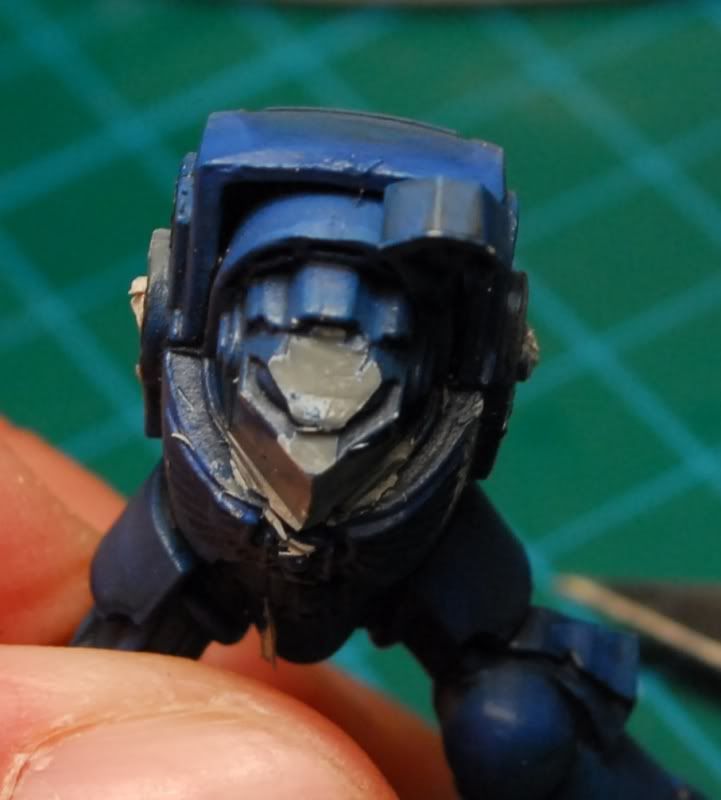
If you like you can drill some “breathing holes” in one or both sides at this point. I do this to about half the squad, and in different patterns / sides. I’m going to leave this guy vanilla though.
Chest – all detail removed to make a nice flat surface
The stuff in red has to go. I use a sharp blade and then finish with a file or abrasive paper
Legs – again, protruding details removed to make way for the plates later
Anything that "sticks out" has to go.
if you aren’t a fan of the leg plates leave these intact and use the legs as is. Personally I feel the bulk of the shoulders demands some bulking of the legs for balance.
Okay so there he is prepped and partially converted, next is to start adding bits back on.
2) The Build
The Head / collar.
For this we need a thin strip of thinish plasticard.
Now I’m terrible at measuring, I tend to go “by eye” its the same when I cook, paint, whatever, so it’s about this big, and it gets fenegled to fit with a few dry fittings and a bit of a trim, until we have this –
The Nemesis force weapon
Here are the components for the NFW,
and the cuts required to get at the good stuff we need
The assembly
and the product.
simples :)
The storm bolter
The bolter is made from....
Broken down into -
and reassembled thus -
Positioning the arms
At this stage and before I affix them or do any GS I get the arms to fit correctly for the pose I want. The posing of AOBR figs is very limited, but since we will be adding our own shoulderpads, we can do what we like to their usual mount, the shoulder nub.
Its this nub that dictates the angle the arm sits at, so whatever we shave flat here, will affect the final pose, experiment with trimming and test fitting until you have a pose you like. Any big “underarm gaps” can be filled and hidden later
Oh, yeah,
It's at this point you should glue the Brass etch in place,
Giving us this assembled Grey Knight to be, awaiting his first Greenstuffing.
3) The Features
The greenstuff – round 1.
The first part of the GS is to prepare each piece, -
The Bolter shroud is probably the first part you should do, it’s easy and it needs to be cured before you can start attaching arms if you want to avoid fingerprints.
You're aiming for roughly this shape, - the feeling that the whole bolter is some kind of armour peice or "cuff"
Next is the body, first step is to pack the GS in there where you need it,
then smooth and shape it to your heart's desire
Once cured, clean off the Vaseline with a q-tip and we're ready to move on.
The plasticard
Here is where I cut and fit the custom pieces, I have to give props here to Ron Saikowski over at From the Warp, without his tutorial and emails I wouldn’t have got these stages down.
Anyway I draw out the following, and mount to plasticard.
I cut out the scrap insides
I then mount this onto cardstock. (the previous two models I used cereal box card, for this one I tried using all plasticard, having found some very thin sheet styrene, allowing me to make the leg plates a little thinner and the feet more visible, as people seem to have expressed a preference for)
And cut the outline
A little curving round the brush and we are ready to go
Glue in place
You can see some issues with the new thin styrene in that is has a tendancy to bend in one place rather than smoothly, not a problem though, a rub over with a sculpting tool smoothes away most of this.
Next we put in some structure for a Tabard – a simple peice of styrene for mount, thicker card this time.
Affix arms
You can pin these if you wish, but I haven’t needed too yet, there's lots of plastic to plastic surface area which means good glue adhesion with CA.
Once the arms are on we can Affix the shoulders.
Bend,
place,glue.
Greenstuff round 2 - tabard and edging
First up, repair any cracks or visible seams in the plasticard parts
After that we are going to apply GS to the tabard plastic to build up folds and create a dynamic shape.
Slap it on first.
Then refine the shape
Then smooth and improve
Don’t forget the back
Detail and done.
Last step is to glue on a few purity seals and bolt heads
The seals just get glued in place, along with a few skulls to "hold the tabard on"
Then the bolts
Theres a trick to getting little things stuck on,
use a Cocktail stick as a glue applicator, dip and drop.
then use a Needle to deposit and position the item
There we are.
One GK Termie, from an AoBR box.
Last thing is....
The base
So here’s what you need to make bases like mine
The "basic" ingredients are :
Wood filler (I think called “spackle” in the US)
Ballast/gravel (your regular basing mix)
And a base (obviously)
I tend to dress this up with “interesting” stuff.
One of my staples is bits of broken plaster, whenever I cast anything is plaster I cast up the leftovers in anything I have handy, then I break it up. This gives me a great material with a mix of rough and smooth surfaces, which makes an excellent concrete/plascrete stand in.
I also use leftover bitz – usually from vehicles. These GK so far have a cut up barell, some tread and this fellow is getting a broken searchlight.
I also keep/ mix in things like wire mesh, balsa wood and these wicked sheets of textured styrene, I’ll use some on this with a tread plate texture.
Okay so thats the “stuff”.
Tools are very simple,
A scalpel,
a pin vice/drill (to mount the guy in the end)
a palette knife for spreading the filler
that’s pretty much it.
Method.
Play around with the bits and test fit them, make any cuts/changes so they fit how you want
With fiddly things you might need to use the old “blu-tak” vice trick
Slap some wood filler on the base, and push it about till you’re happy.
Then stick your interesting bits on
You can choose to either impress some ballast now, or glue it on later. I like to apply it while the filler is still wet.
You might want to just “eye up” and check the mini will sit how you want, with experience this gets easier, but expect your first few to look like they are climbing Kilimanjaro.
That’s it. Leave it to set. ( a couple of hours usually, but read your filler tub)
And last but not least, Here is the whole thing primed and ready for paint.
(of course hes just "resing" in place as I'll paint them seperately.)
All I can say is I hope that tutorial had value for you and if it did, please let me know.
If there's anything i've taken for granted you know, or if you've any questions in general, let me know what I missed or what you'd like to know and I'll do my best to answer.

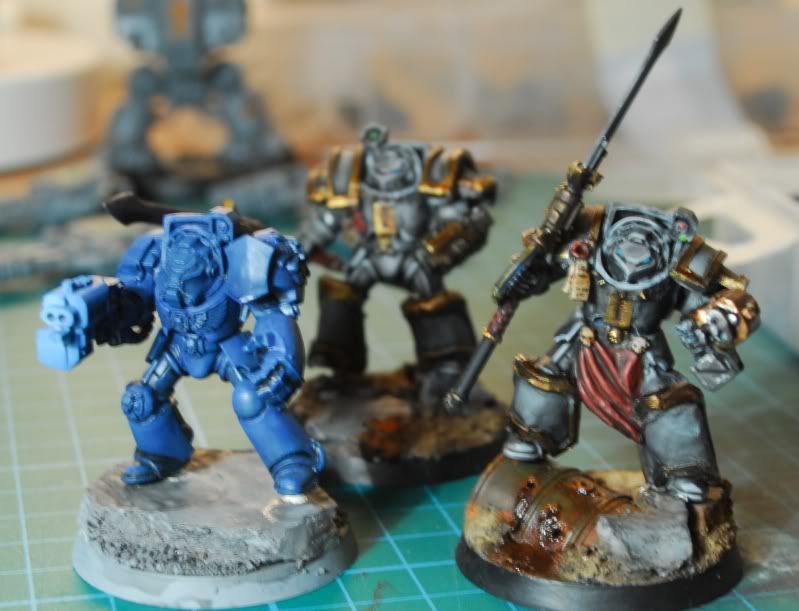
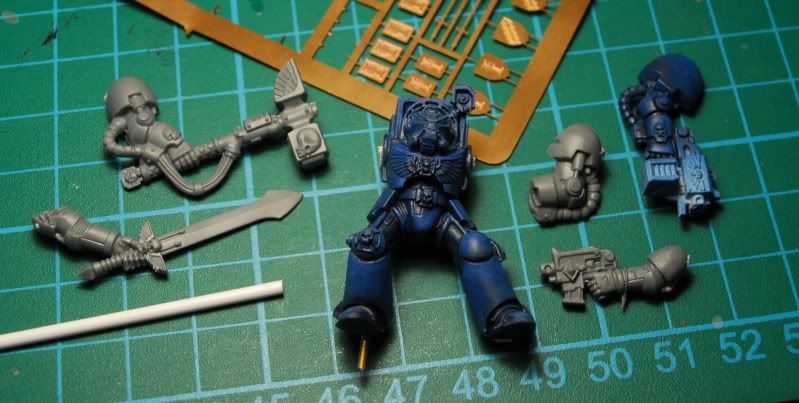
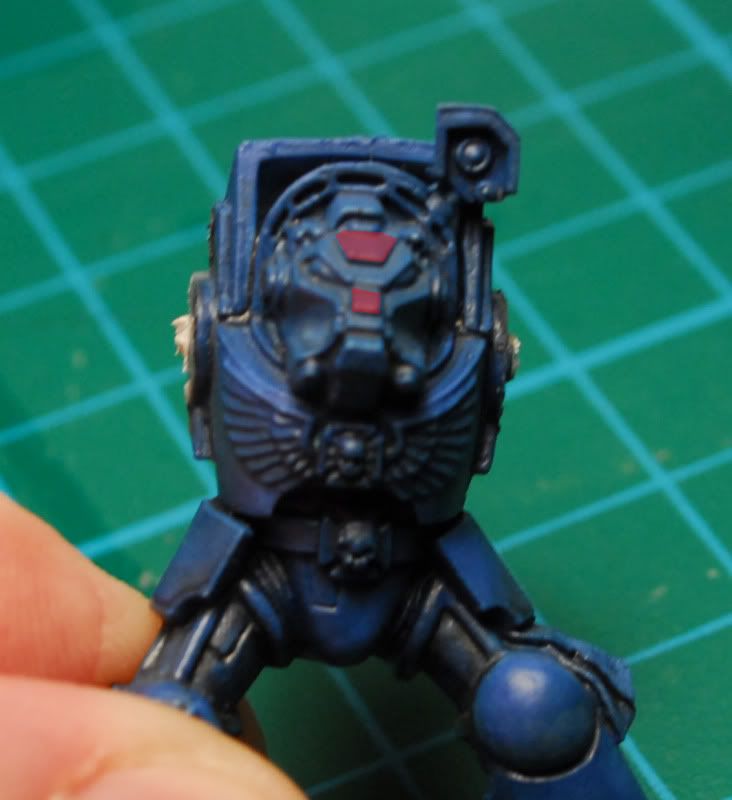
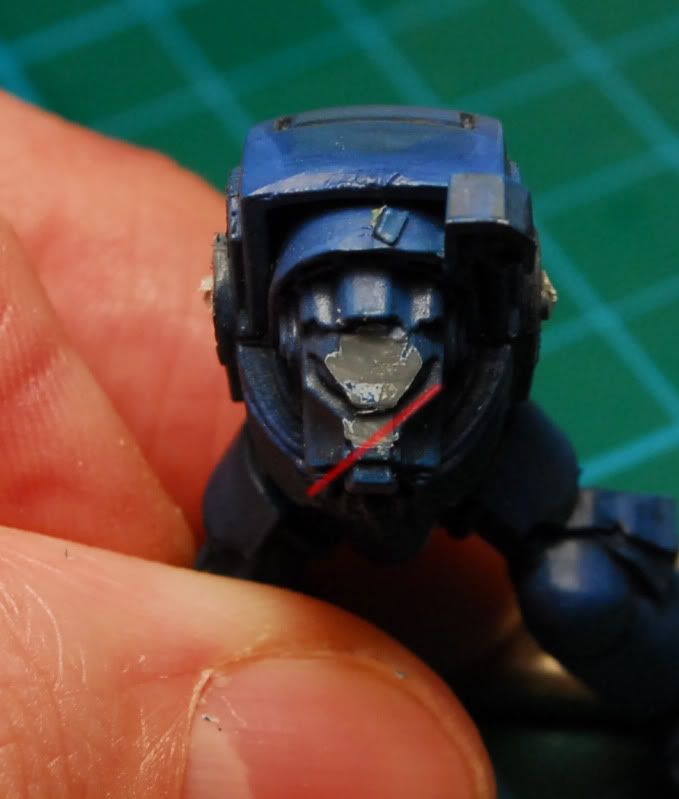
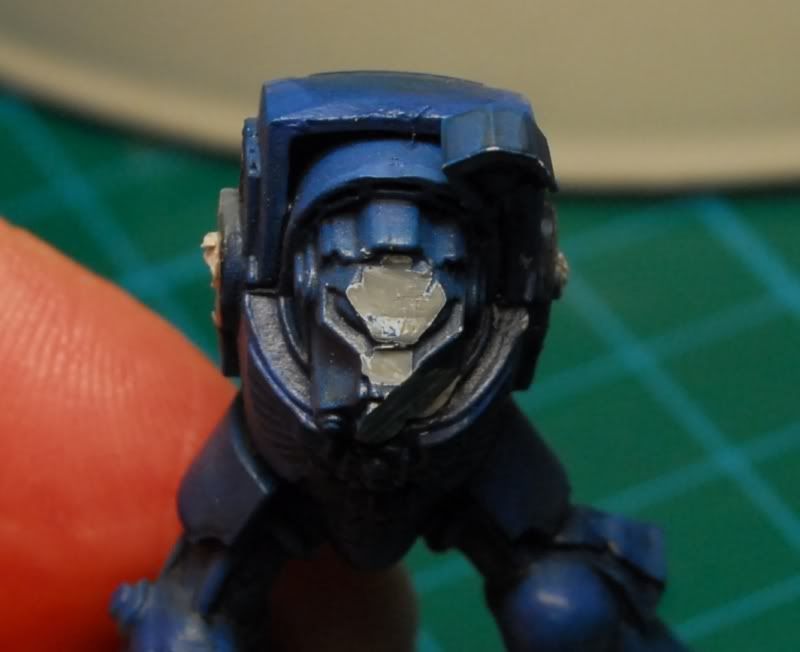
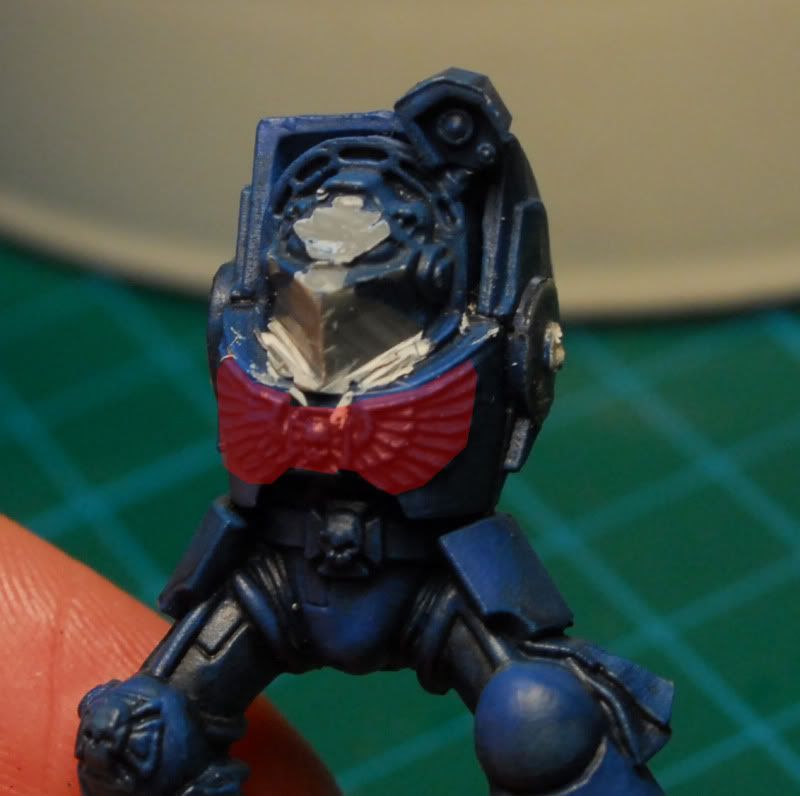
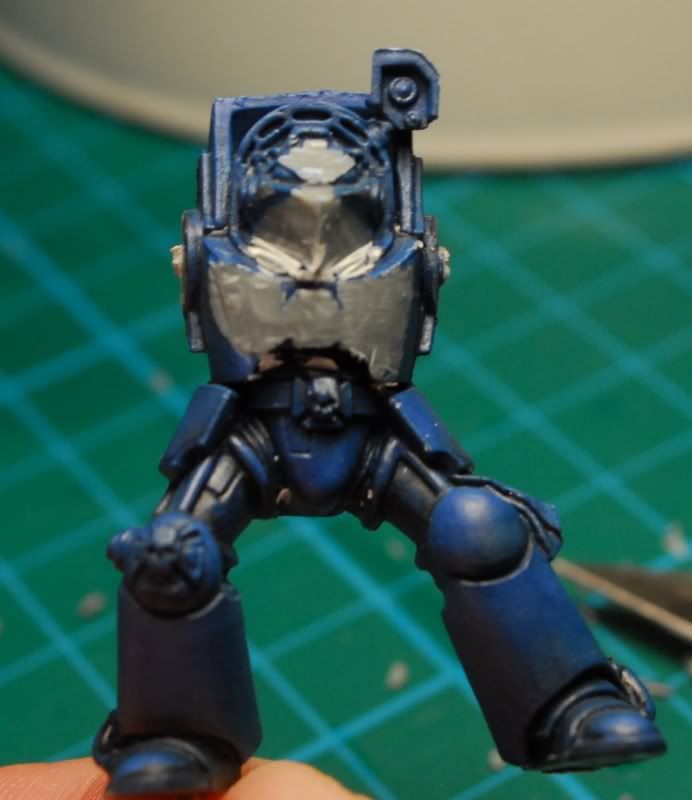
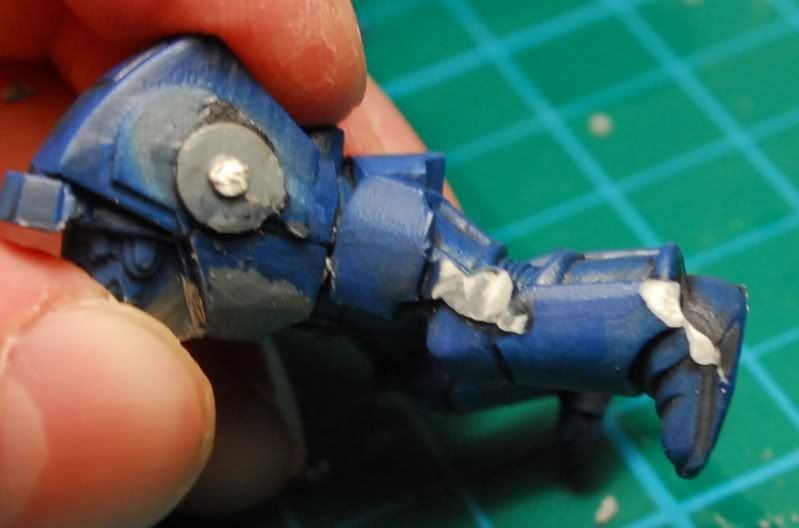
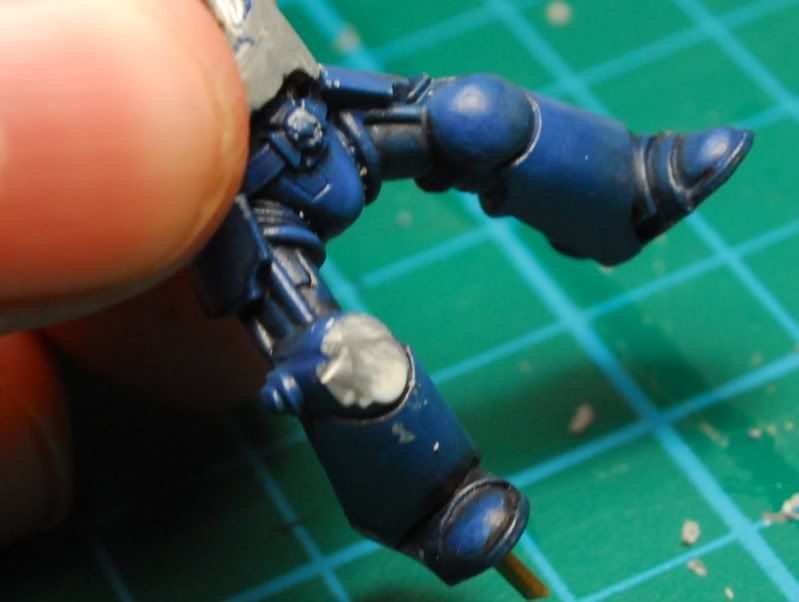
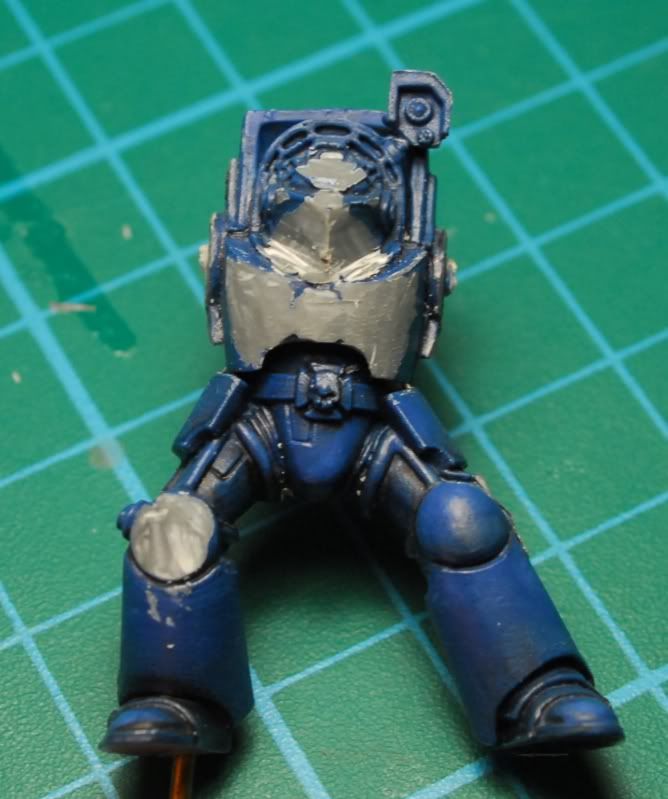

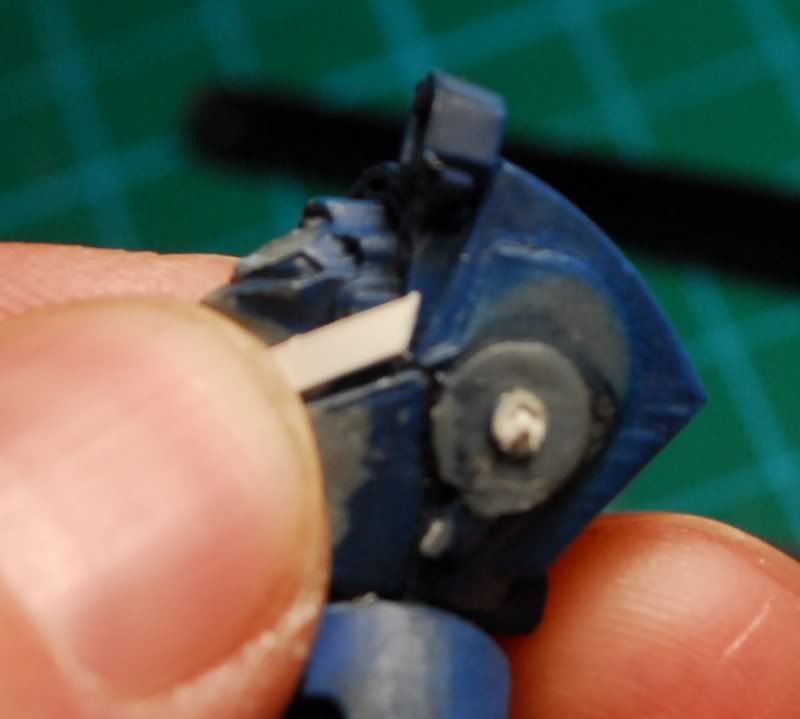
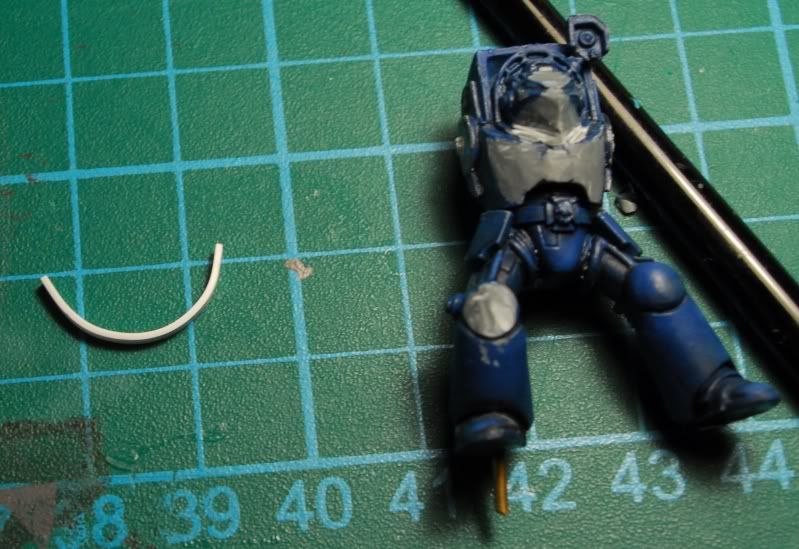
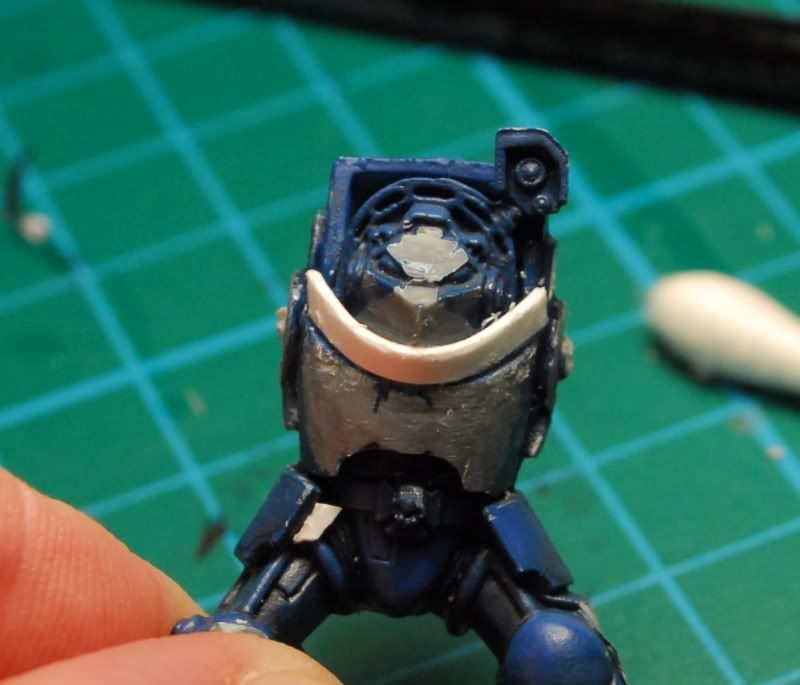
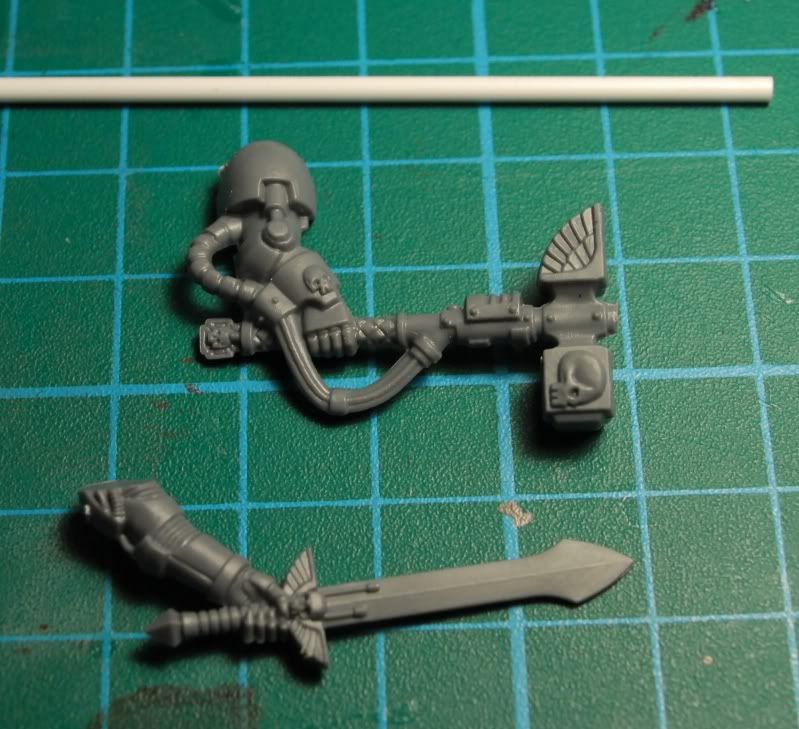

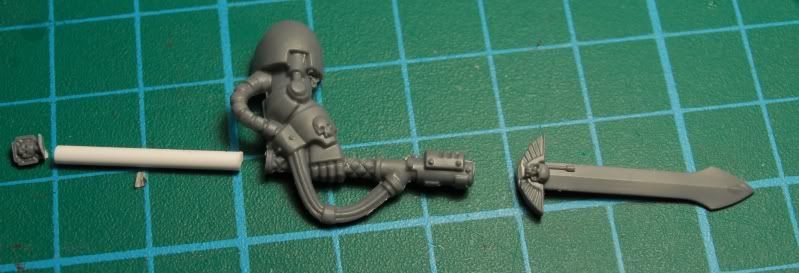
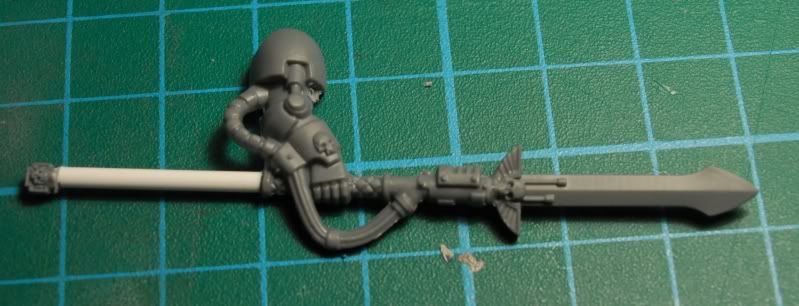
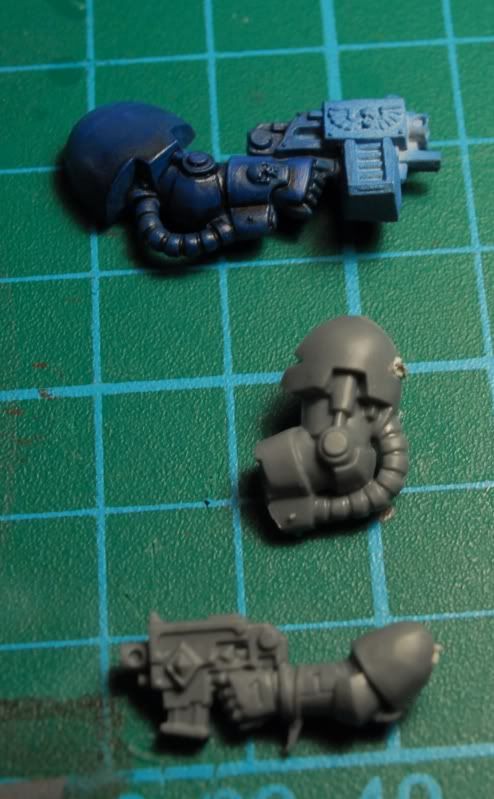
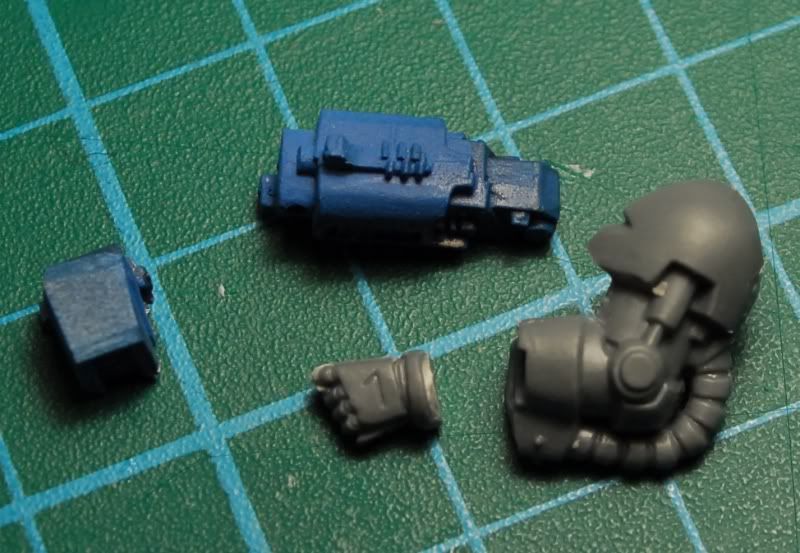
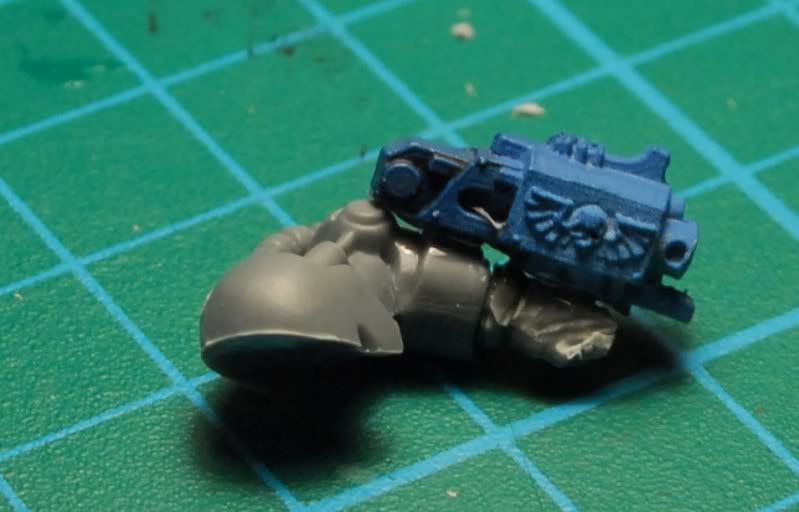
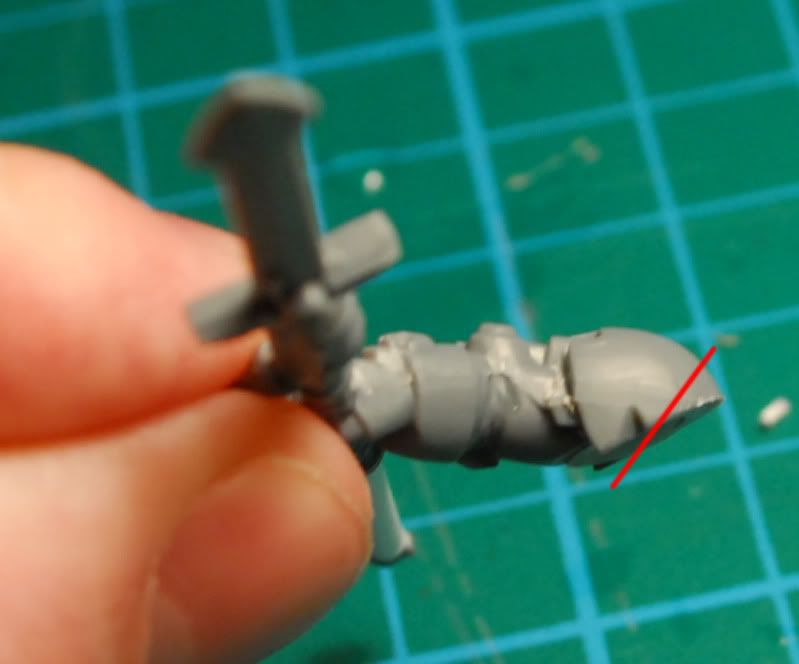
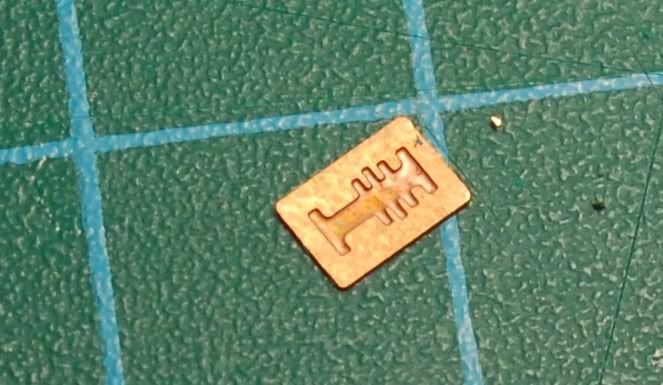
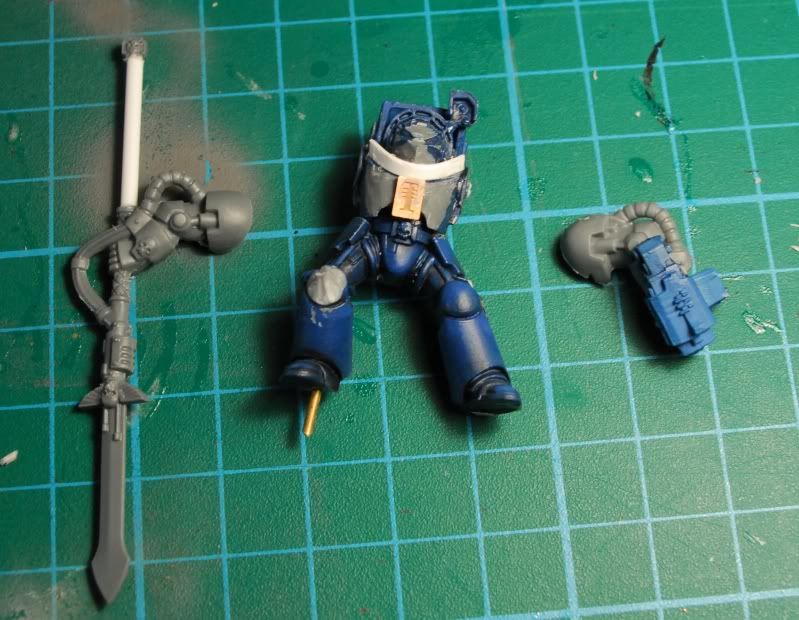

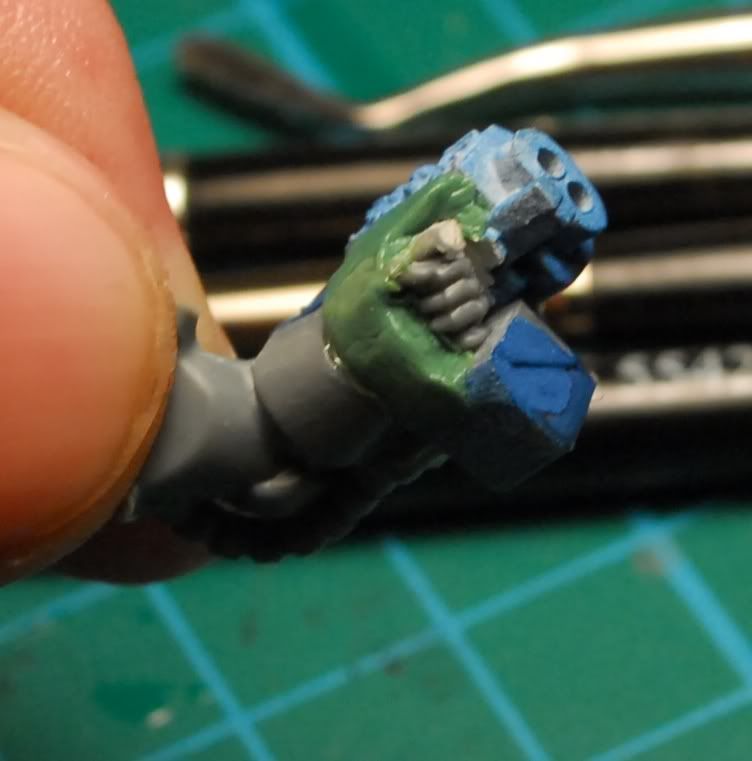
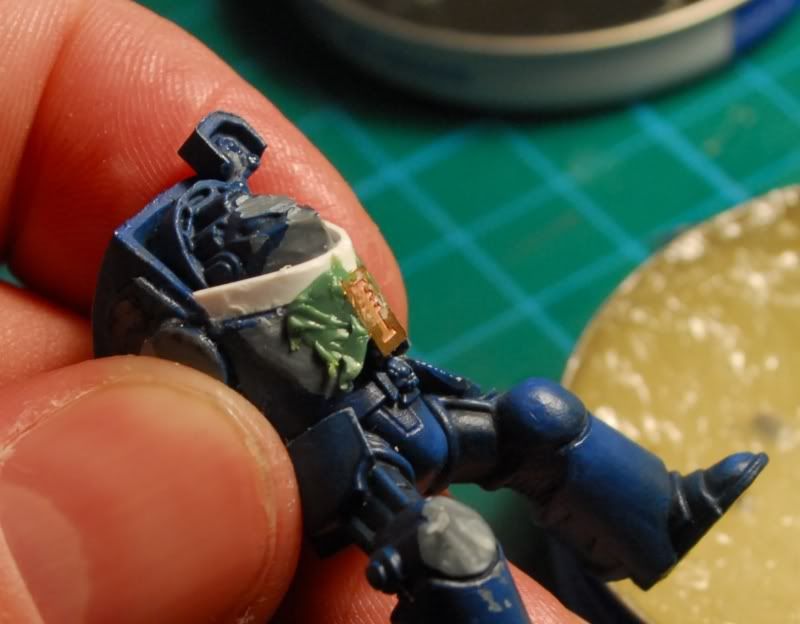
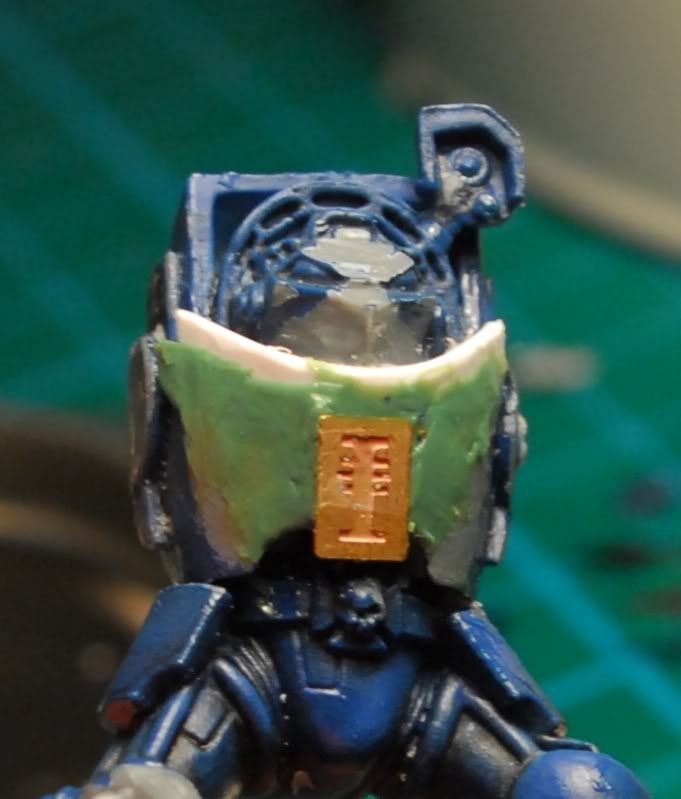
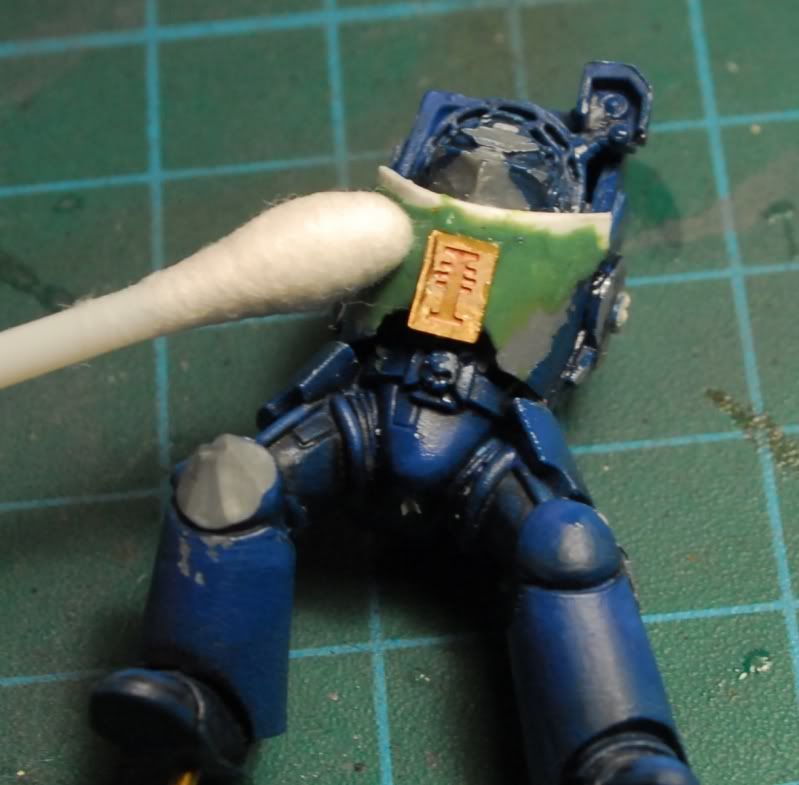
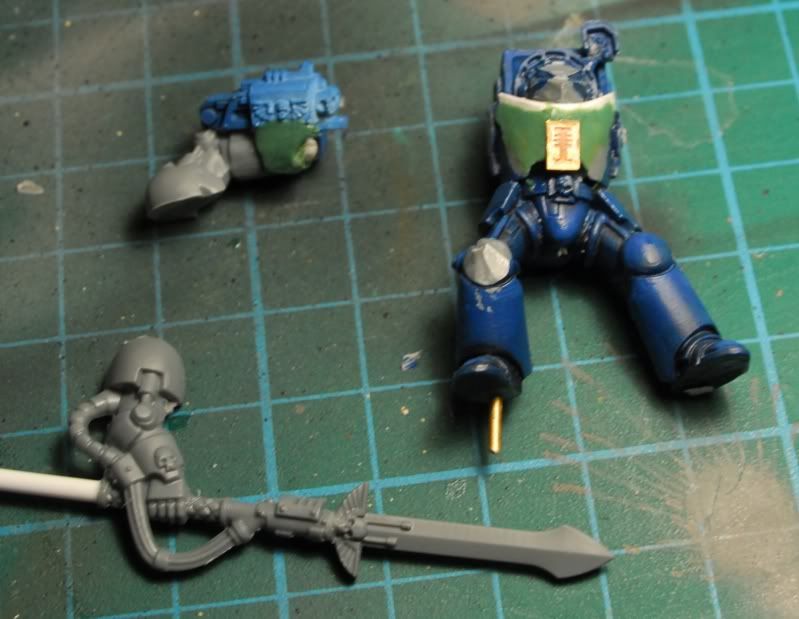
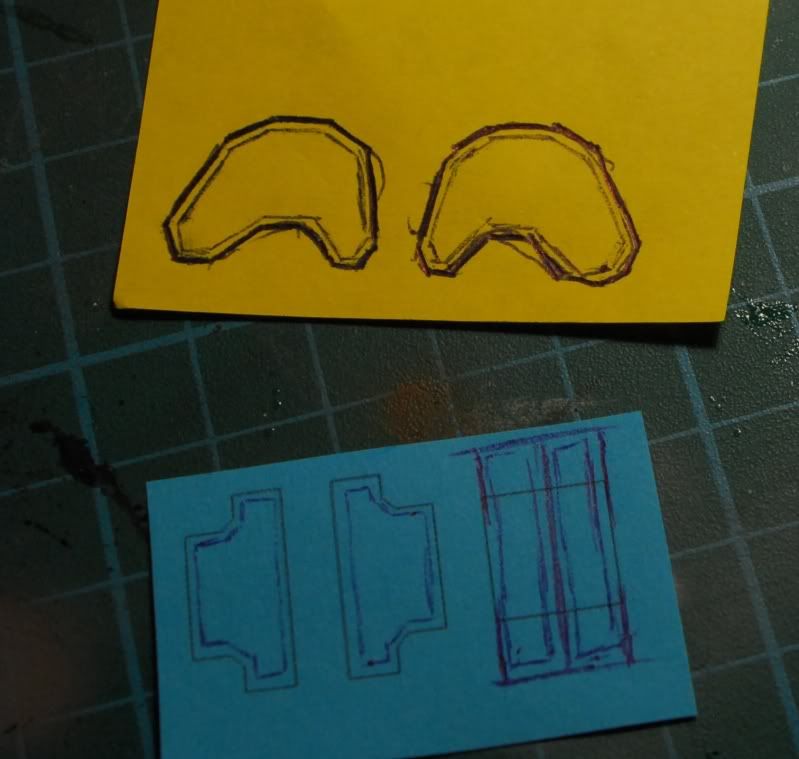
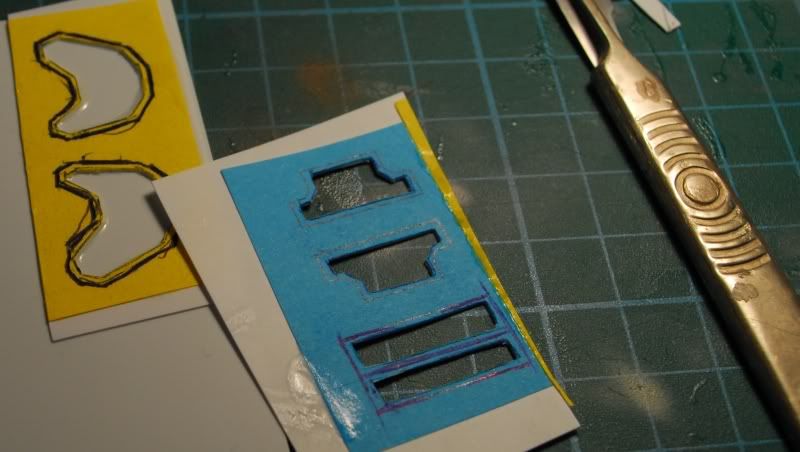
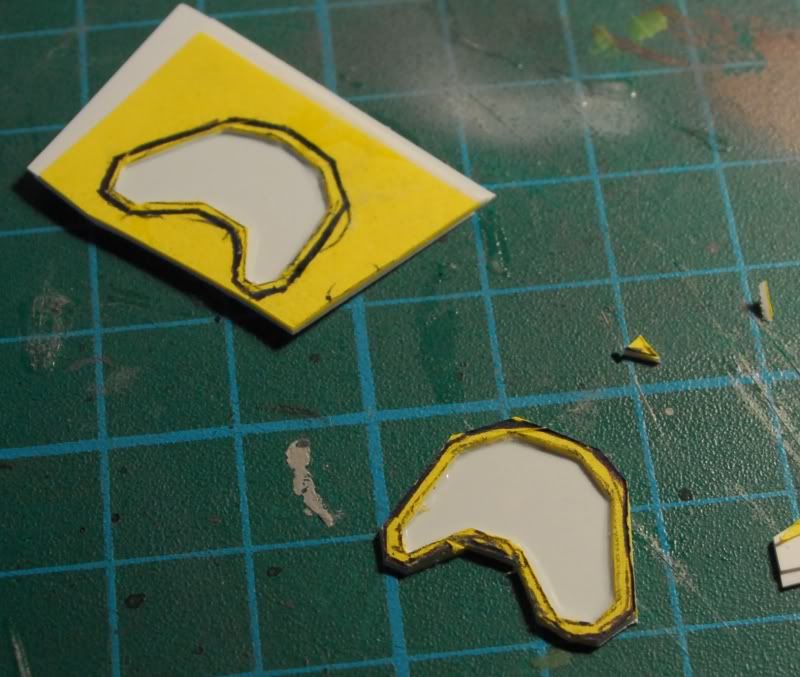
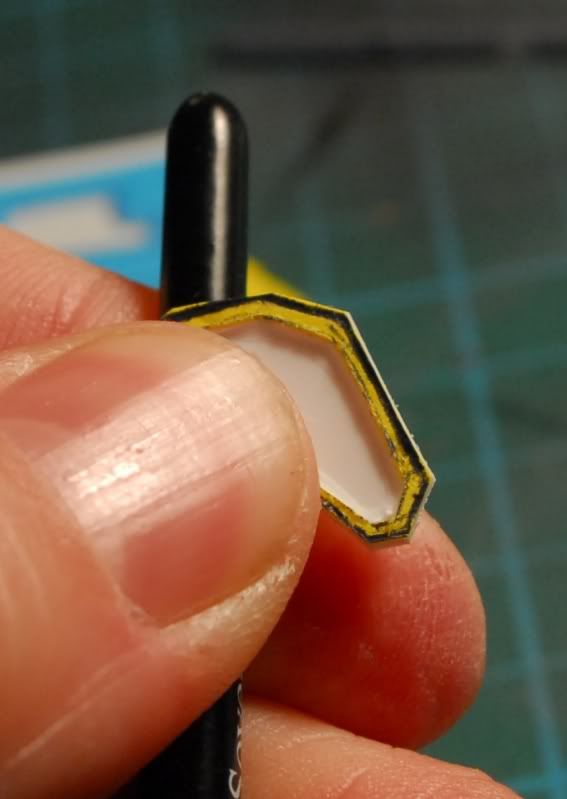
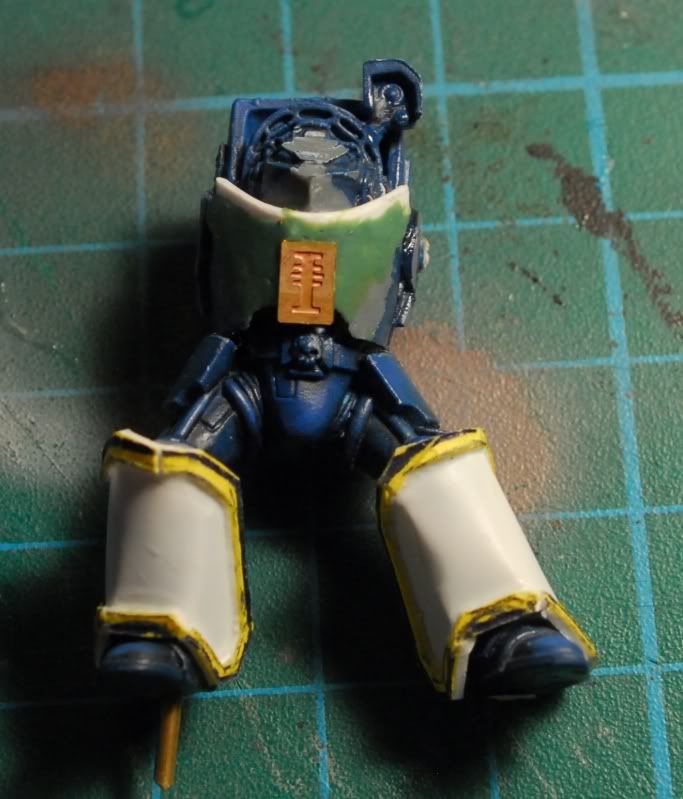
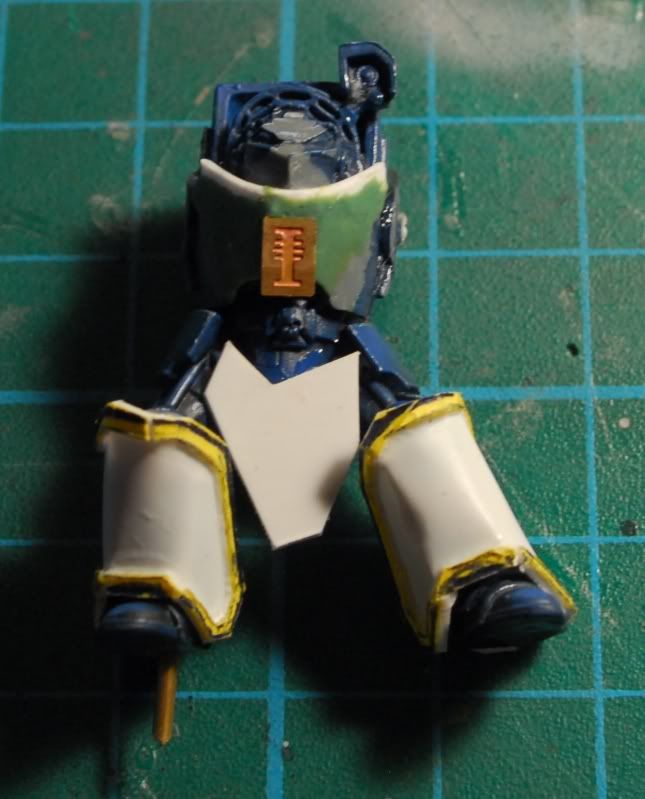

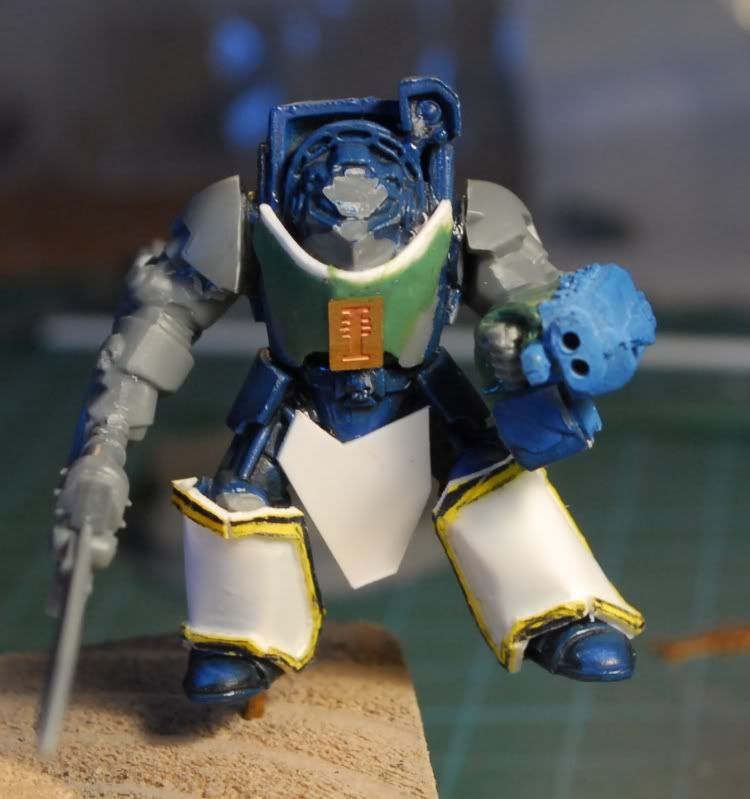
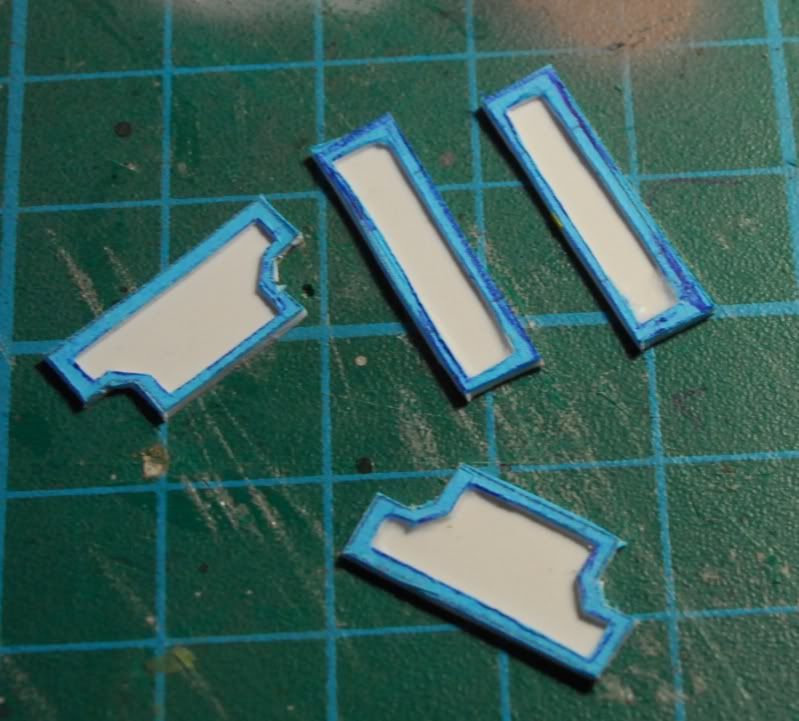
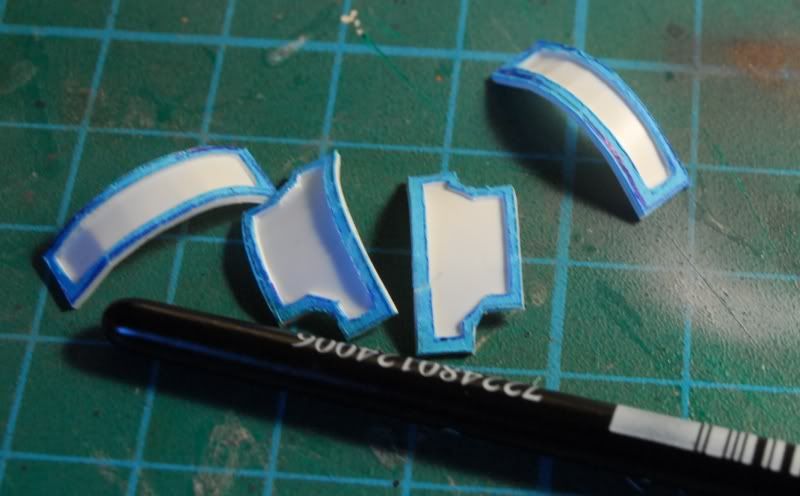
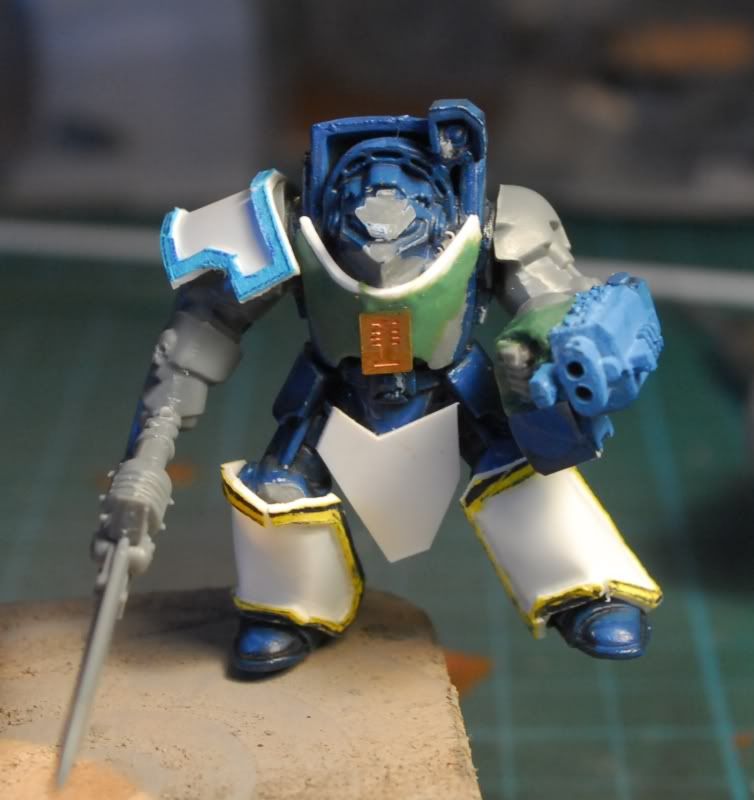
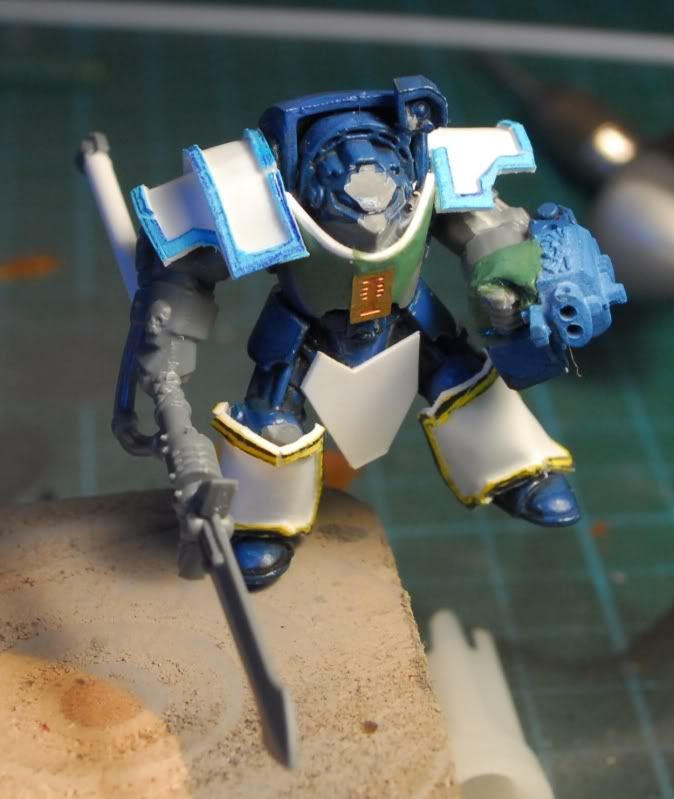
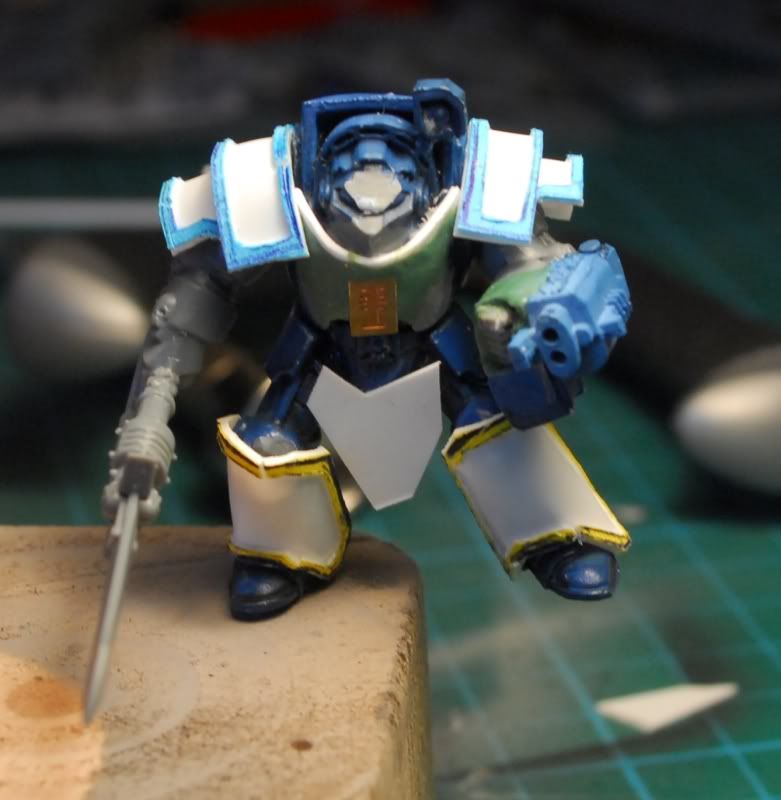

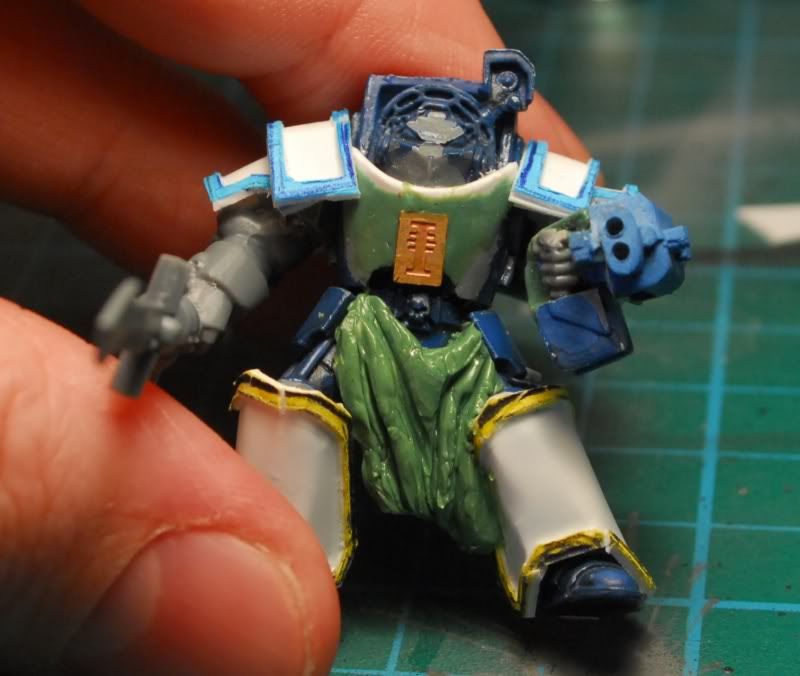
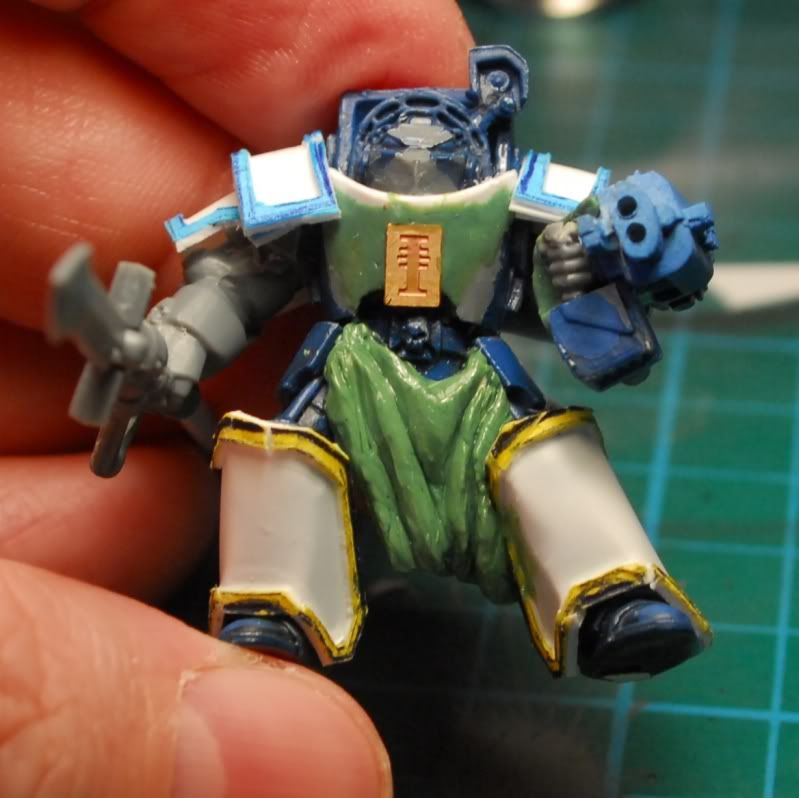
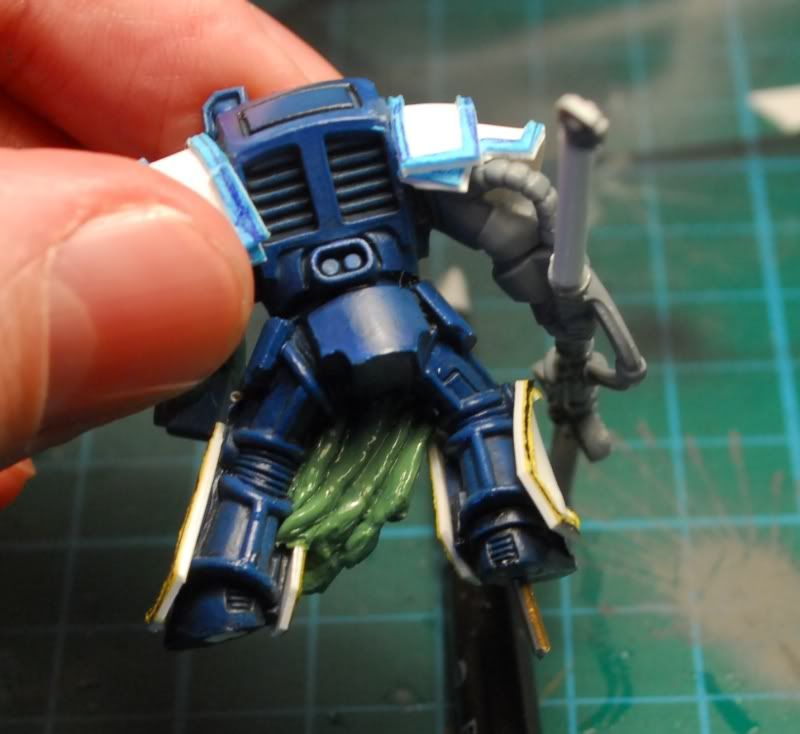
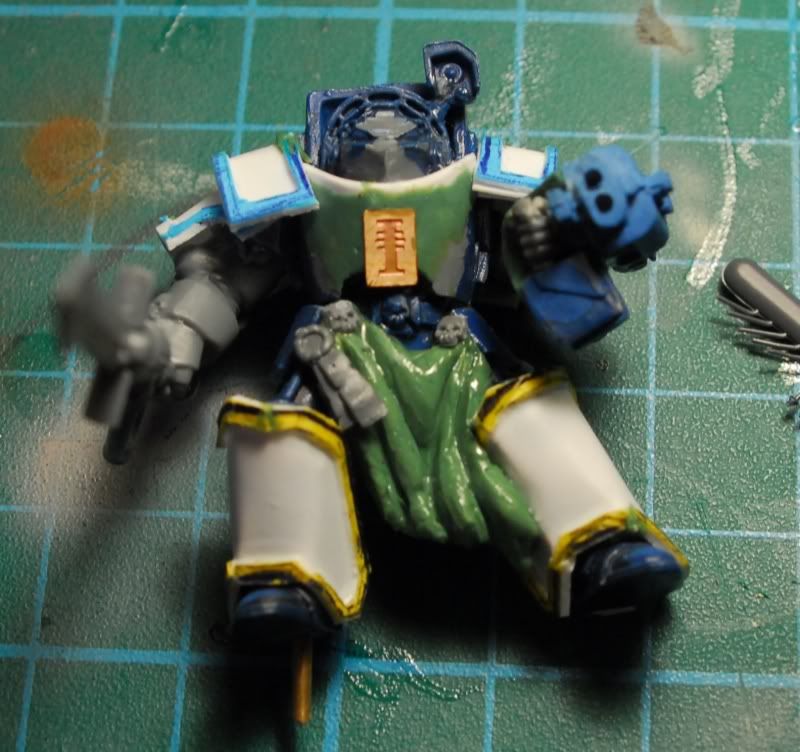
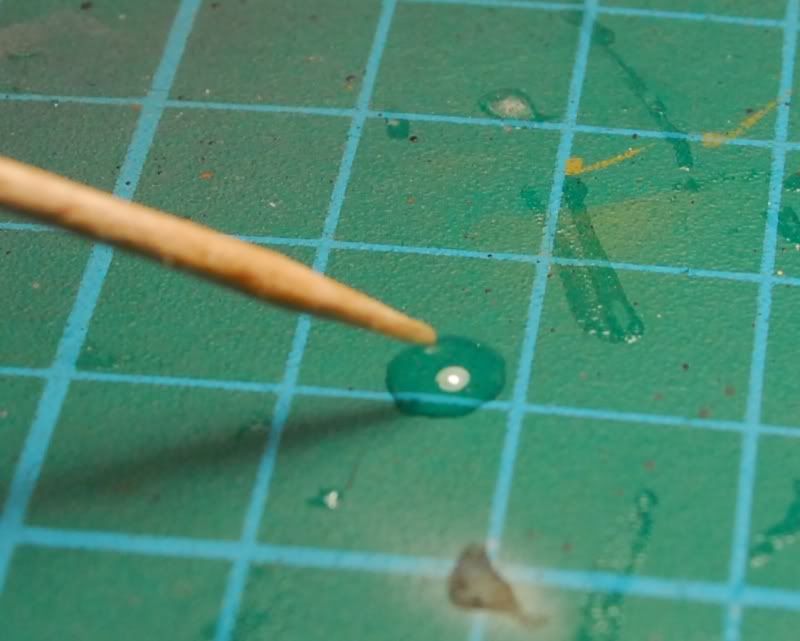
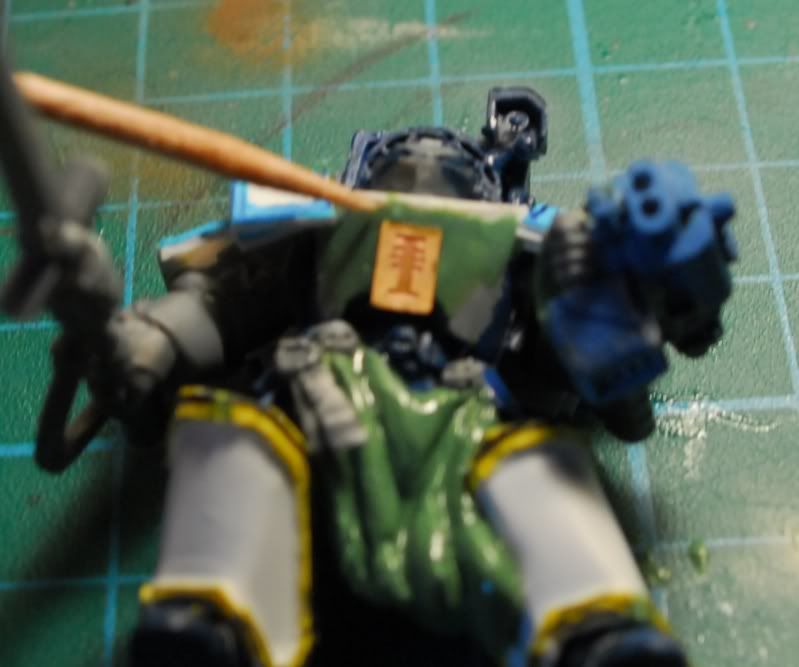
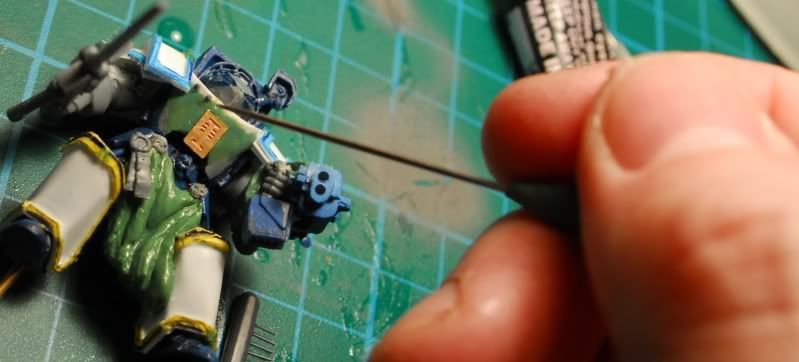
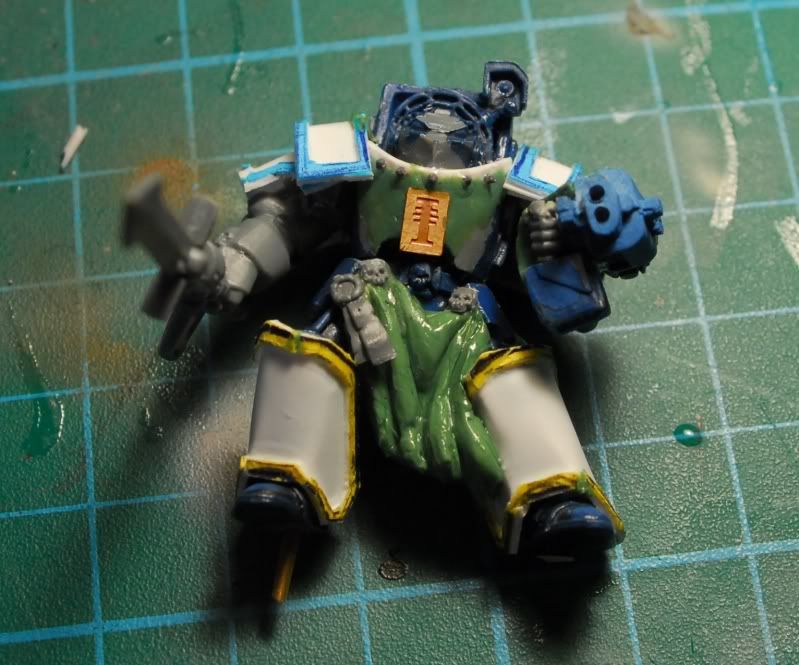
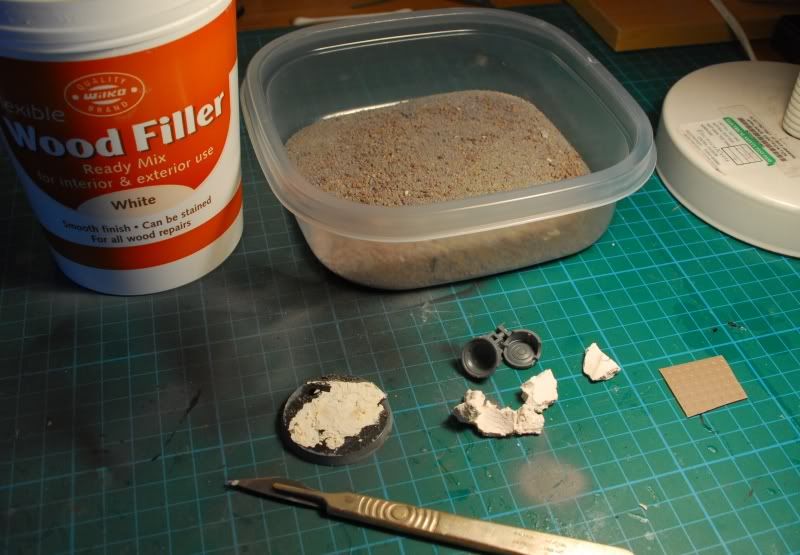
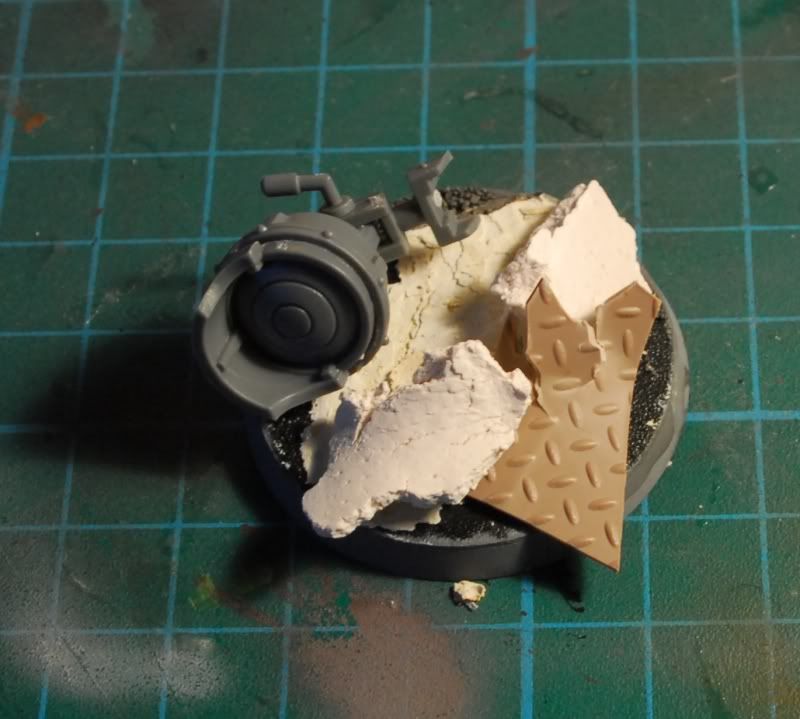
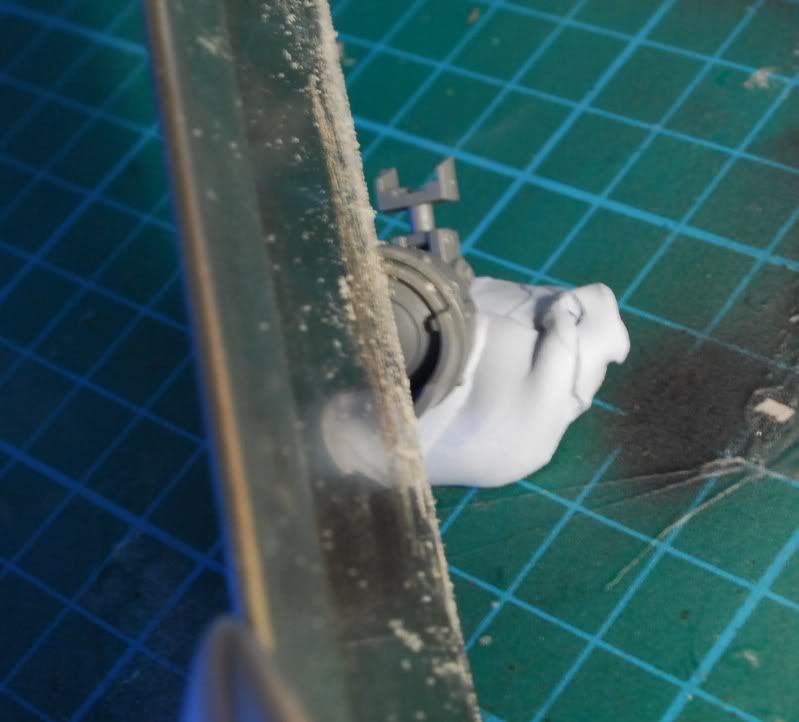
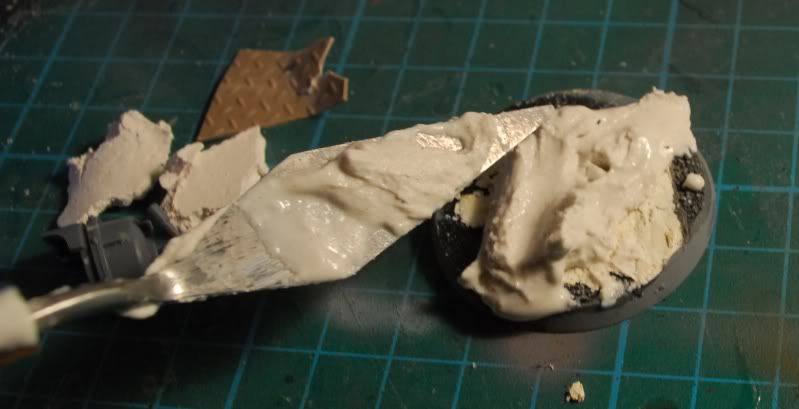
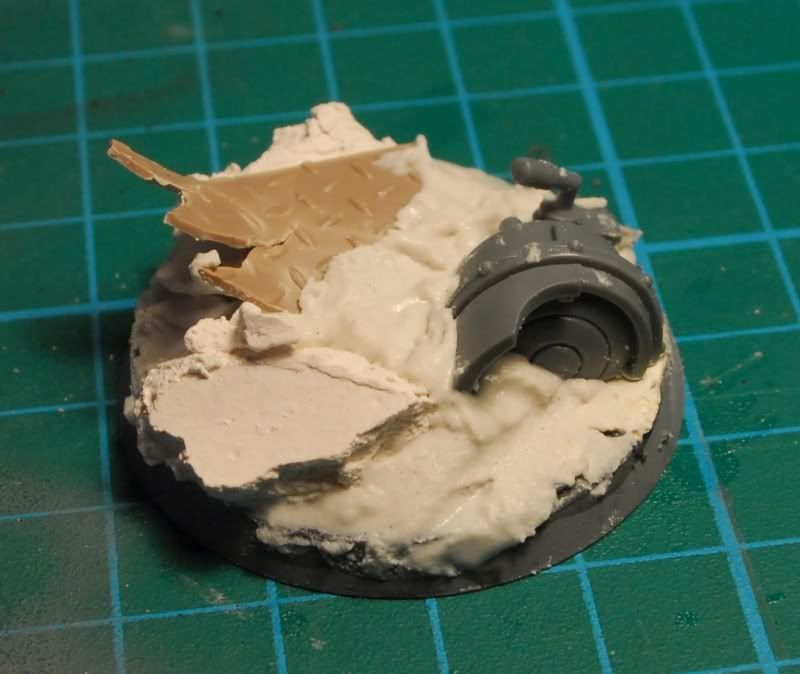
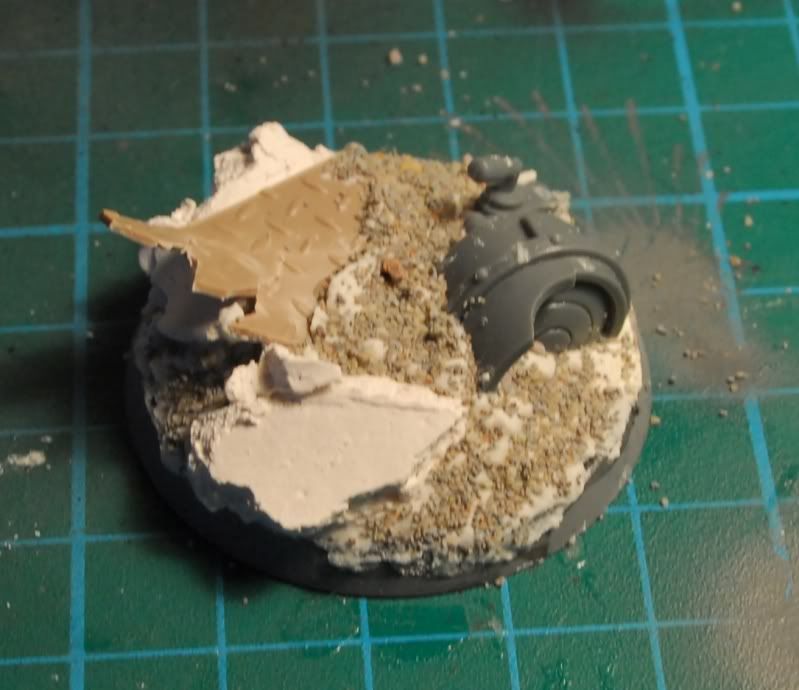

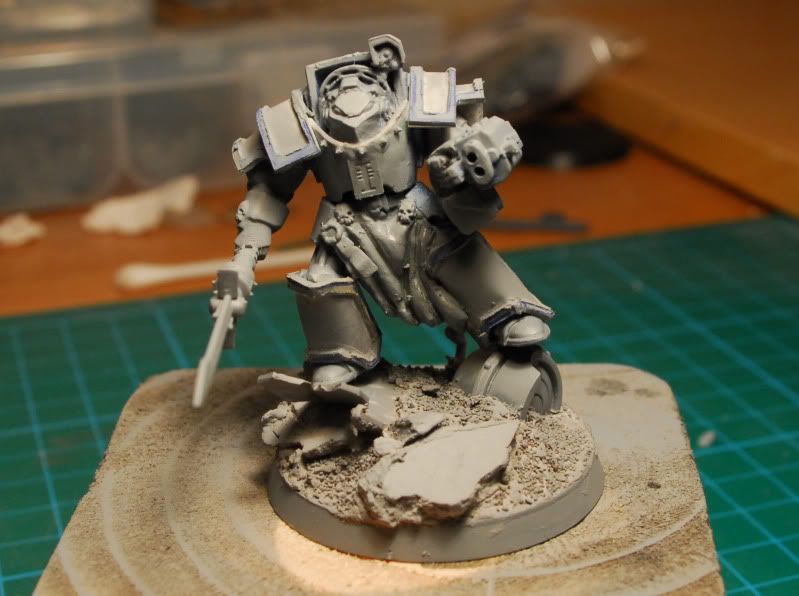
Fantastic work here. I will definitely consider doing this when I get another AOBR set. I might still pick up some GKT but fleshing out the squad to 10 would make it so awesome and with this technique I could bring out some variation in the poses.
ReplyDeleteThumbs up.
Nice job!
ReplyDeletegood tutorial thank you
ReplyDeleteWow! Nice work there, matey!
ReplyDeleteThanks guys :)
ReplyDeleteI'm very happy you seem to think this kind of thing has some value. It's not easy to do, to remember to photograph each change, but I will endeavor to get more tutorials up over the next few months.
I'd be happy to take suggestions on what these should cover, as this one was largely a response to that.
I think also because for most tings there are tuts out there, i never know what i should share, and what everyone already knows from other sources.
Quality. I'm gonna make a few cause they look like a cool retinue for my inquistor lord Hector Rex. The shoulder pads are like identical.
ReplyDeleteIt's amazing how much effort is involved in that conversion, but the end product is indeed amazing. Have you considered using the Tamiya jerry cans for shoulder pads? It obviously costs more than cardboard, but it might make the leg/shoulder armor mods quicker.
ReplyDeleteThe barrels I did try, its even ini an earlier post, but they didnt look right.
ReplyDeleteIf I make any more however, maxmini now make awesome resin pads, but they didnt back when I made these.
Yeah, I've seen those pads, but since you used an AOBR model here, I thought the goal was really to make GK termies on the cheap.
ReplyDeleteThanks for the reply.
WOW
ReplyDeleteAmazing stuff
it looks to me like the shoulder pads have a raised trim, how did you do that?
Hey Fluffy,
ReplyDeleteIn the bit under "plasticard" you can see the technique.. make two templates for the pad.. cut out the inside of one, leaving a small edge, then glue it to the other, whole one.
instant raised edge.
hope that ehlps, and that the answer wasnt too long in coming, I've been neglecting my blog due to work issues..